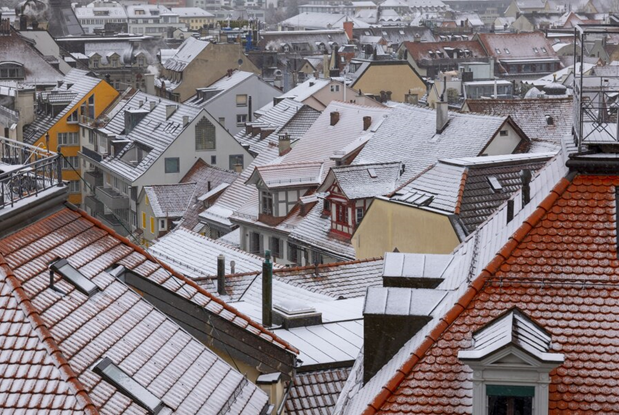
10 Reasons Your Metal Roof Leaks in Heavy Rain
Almost everyone living in the UK knows that a metal roof leaks in heavy rain, leading to an uncomfortable living condition and the growth of mould if the problem is left unaddressed. While the probability of leaks is usually higher for metal due to unavoidable gaps in between panels, roofs lined with rubber, shingles, or tiles are also at risk. Moreover, roof leaks in heavy rain cost you significantly if you don’t get the repair or replacement done on time. So, if you are wondering ‘how do I stop my roof leaking in heavy rain’, first take a look at the 10 possible reasons why it might be leaking and then get professional help.
10 Possible Reasons Why Metal Roof Leaks in Heavy Rain
1, Overlapping Panels
Metal roof leaks in heavy rain in UK mostly occur due to gaps in overlapping panels and a resulting condition called capillary draw. In this, water moves in between metal sheets and gradually starts dripping. Though the areas between panels are sealed at the time of roof installation, they tend to deteriorate as time goes by. Rough winds and heat can also cause movement in the roof system, so by the time rain sets in, the sealant is worn and the roof starts leaking.
2, Roofing Screws
When it comes to a metal roof leak in heavy rain, the screws that hold the panels together might be the problem. If they are overdriven, they can damage the panel and sealant. On the other hand, if they are under-driven, the rubber part of the screw is not compressed enough and there is a gap. Screws driven at incorrect angles or those that are worn out can also lead to leaks.
3, Aging
Whether you are worried about rubber, shingled, tiled or metal roof leaks in heavy rain, remember that age can be a huge factor. No matter how high-quality the material is, with time, extreme weather conditions and random impacts can lead to scratches, dents, cracks, and punctures. Metal roofs might corrode, while tiled or shingled roofs might have pieces missing. Felt roofs might tear easily. Hence, it’s important to consult an experienced roofing company in London for periodic inspection and maintenance.
4, Damaged or Inferior Flashing
Flashing, usually made of galvanised steel or aluminium, is used to protect the areas around skylights, chimneys, and dormer windows. This material helps keep water away from these points of ingress. However, if the flashing is subpar or damaged, water can leak through vulnerable spots.
5, Unsuitable Material
Metal roof leaks in heavy rain in UK are common because though metal is often chosen for its durability, it is not ideal if you live in an area that is mostly wet. As discussed above, overlapping panels and wrongly driven screws are the usual culprits. Rubber and fiberglass are better options for waterproofing a flat roof. They can last for decades if maintained, thereby helping you to avoid bearing the cost of flat roof replacement due to leaks. In case your roof is pitched, it is important to pick the right kind of shingles or tiles depending on the roof’s angle. Otherwise, leaks can occur when it rains heavily.
6, Poorly Installed Skylights or Roof Windows
While skylights or roof windows bring in a lot of natural light, they can lead to tile, rubber, fiberglass, or metal roof leaks in heavy rain if not installed correctly. Any gap around their frames or damaged sealant can allow rainwater to seep through easily. Hiring a reliable roofing company like FastRoofing to install the same can save you from this problem.
7, Damaged Membranes and Underlay
Remember that your main property or garage roof replacement cost can shoot up if the underlay or membranes of the roof is damaged. These act as a second level of protection against water ingress, redirecting it towards the gutters. But if they are damaged, a bigger repair or replacement job might be the only option.
8, Gutters Clogged with Debris and Leaves
Gutters tend to get clogged with stray leaves, twigs, dirt, and random debris from time to time. Though they are responsible for channelling rainwater away from the building, clogged gutters can easily overflow when it pours. So, if you have been wondering ‘how do I stop my roof leaking in heavy rain’, simply getting the gutters cleaned can do the trick.
9, Damaged Soffits and Fascia Boards
Roof leaks in heavy rain cost you a lot if you are not careful about minor but important aspects of your property. For instance, soffits and fascia boards, responsible for preventing water from getting inside your loft and brickwork, can rot or get damaged over time. Once that happens, water starts leaking through your roof easily. Often, getting wooden soffits and fascia boards replaced with UPVC ones can solve the issue. A reliable roofing company in London can do it for you.
10, Condensation in the Loft
Whether it’s some other material or metal, roof leaks in heavy rain can happen due to factors you might not think about right away. For example, when heavy rains increase the humidity level of the air, it can lead to loft condensation. The resultant damp atmosphere can damage the roof’s insulation and woodwork besides promoting mould growth. If the structural integrity of the roof is heavily compromised, you might end up with leaks. So, watch out for a musty smell in your loft or water pooling.
Conclusion
No matter how romantic it seems when it pours, a tile, fiberglass, rubber, or metal roof leak in heavy rain can prove to be extremely inconvenient and drain you financially as well. Hence, it is crucial to check your roof regularly, hire professionals for periodic maintenance, spot problems at the earliest, and get necessary repairs done before the problem magnifies. If you are not sure which roofing company in London can handle all leaky roof jobs for you, consider FastRoofing. Contact the experienced professionals here to discuss your concern in details, schedule a visit, and get leaks fixed efficiently. You can rest assured that the job will be top-quality and yet won’t cost the earth.
